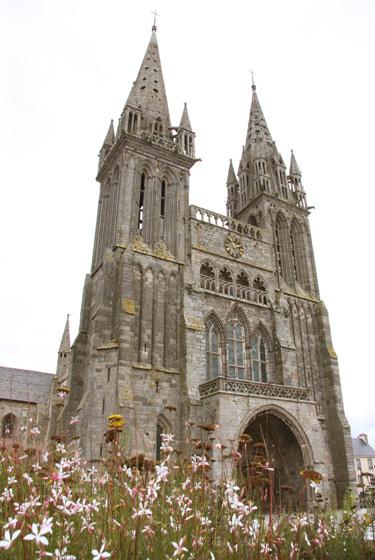Saint-Pol-de-Leon Cathedral

Situated on the northern Finistère coast, Saint-Pol de Léon is a city of art and history with a monumental architectural heritage. Inherited from a time of prosperity and opulence, the monuments of the former episcopal city are of exceptional quality and constitute an essential historical centre in Brittany. St Paul Aurélien Cathedral, a true architectural jewel, bears witness to the soul and history of the land of Leon.
About this building
The reconstruction of the former St. Paul Aurelian Cathedral took place between the 13th and 16th centuries on the structure, fairly well preserved at the transept and attic level, of a 12th century basilica. The western façade, strongly influenced by Norman architecture, dates from the early 13th century. Then the south spire and the west portal (14th century), the north spire and the vaults of the nave (late 14th century), and finally the choir, in the purest Gothic style of the 15th century. The present basilica-cathedral is a Gothic church, influenced by the Norman style and built from a Romanesque church of which we can still see vestiges. It is inspired in particular by the cathedral of Coutances. Its two dissimilar towers with imposing bell towers reach a height of 55 meters. The nave was built in Caen stone, an imported stone which was expensive to supply. The rest of the building is made of local granite. The forecourt was rebuilt in 2006 with granite from China. The slabs are rhombuses that echo the plan of the religious monument. Their two colours were chosen to recall the paving of the choir.





